Child-Led Budget Advocacy in Nepal
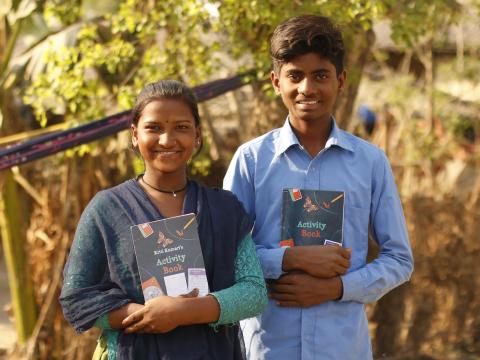
A case story of children and young people who are leading the initiatives for budget advocacy
Background
Children and youth are powerful agents for bringing an impact to their society and nation. The Government of Nepal has endorsed policies and acts to ensure the rights of children leading to their fullness of life. Moreover, the constitution of Nepal guarantees fundamental rights for protecting and safeguarding child rights. Federalism has impelled better opportunities for children, empowering them to negotiate their rights with the local governments. Among the three tiers of government, the local government is closely connected to the communities and people during the planning and formulation of policies. Local Governments itself is an independent body developing plans, policies, and regulations aligning to the national and international policies and commitments.
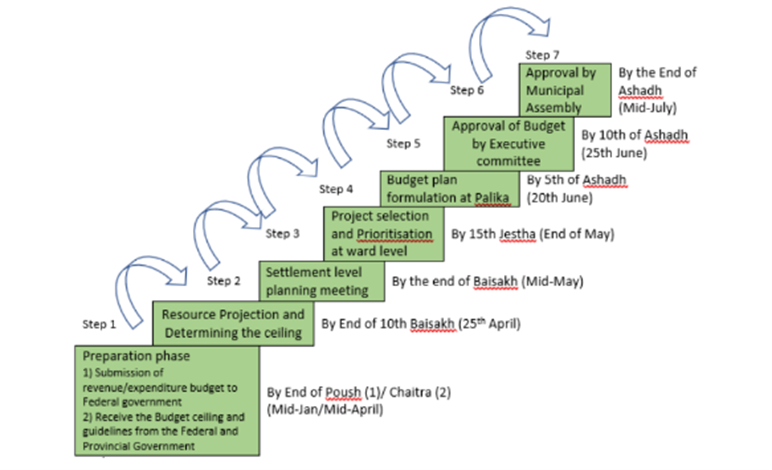
The Nepalese government has defined a seven-step budget formulation process at the local government level. The settlement-level planning meeting is one of the substantial steps where community people, including children, have the provision to be engaged in the budget formulation process. Despite the provision, there have been several loopholes in the participatory approach where children’s participation is overlooked during the consultation process.
World Vision International (WVI) Nepal advocates for the voices of children and stands with a firm belief that they must be provided with a meaningful platform, adequate skills and knowledge to influence decision-making processes on issues that matter to them. Children hold the right to participate, and this is a pivotal standpoint to empower them and create an enabling environment where they can thrive as child leaders.
WVI Nepal has been practicing three stages of children's engagement, namely community, ward and municipal levels for budget advocacy. These step-by-step advocacy approaches were adopted and oriented to community mobilisers for facilitating the budget advocacy process at the community level. This process is followed in the leadership of the children and in the presence of community people and government stakeholders.
Community Level Budget Advocacy- Issues Prioritisation Stage
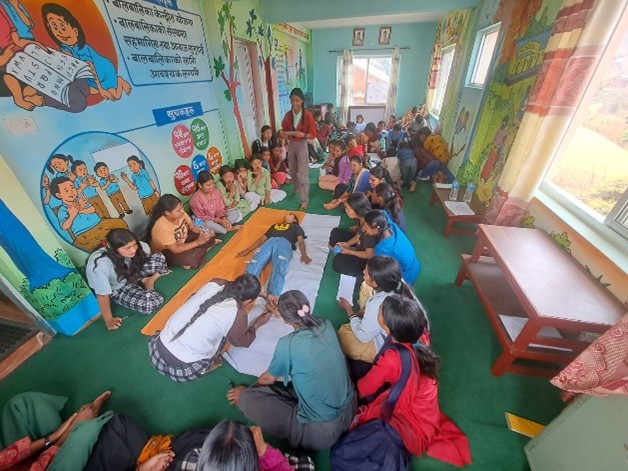
This is the initial stage of the budget advocacy process, where children take the lead in prioritising the issues and concerns they have been facing and observing in their communities. Child Clubs adopt the child congress approach, applying child-friendly tools and processes with the support from community mobilisers. Children have led and organised around 45 community-level child-led consultations to identify the issues of child protection. Some of the major prevailing issues listed during the consultations were child marriage, child labour, substance child abuse, child labour, absence of birth registrations, school dropouts, domestic violence, poor water facilities, lack of child-friendly infrastructures and child funds, inappropriate behaviours, insufficient sports materials at schools, corporal punishment, road accidents, child neglect at home and school, no implementation of children complain box at schools, untouchability among Dalit, marginalized children, and increasing trend of suicide rate, trafficking, and poor child protection system, among others. It was noted that child protection cases varied according to geographic locations. Such a consultation process made children feel more empowered and equipped them with resources to identify the issues. Hereafter, the children developed an action plan to resolve the issues and submitted it to the ward chair for budget allocation, aiming to address these issues. Consequently, the children prioritised more than 30 child protection issues and developed an action plan after the consultations.
Ward Level Budget Advocacy—Budget Advocacy Influence Stage
This is an important stage of budget advocacy where ward-level child club networks organise consultations together with child clubs and those involved in the community-level consultation process. The ward-level Child Club network invited ward chairpersons and ward-elected members, including other influential stakeholders, during the consultation process. Amidst the consultation, children presented their selective priorities, which they prepared during settlement consultation. Hereafter, a cumulative action plan with a budget was handed to the ward chair with commitments of implementation. The chair of the Ward-10 Child Rights Committee (CRC) in Tinpatan Rural Municipality, Punya Hari Bhujel, implied, “I am so glad to see the children being empowered and proactively engaged to speak up for their rights. Children conducting such consultation and prioritising their issues and actions has made me proud. I am pleased to receive an action plan with a budget of USD 500 to invest in the children. I will negotiate and advocate to the municipal chair for releasing funds to children. My ward has been declared child-friendly, and we will soon be declaring the ward as nutrition-friendly.”
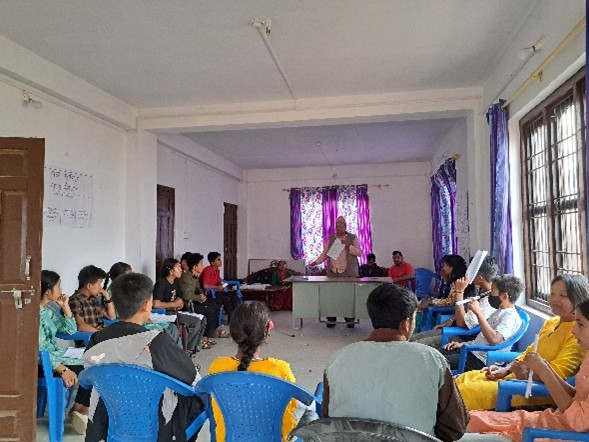
Till the reporting date, USD 400,076.9 has been allocated as per the demands of children. 16-year-old child club representative, Rit Bahadur expressed, “We appreciate the municipality for their special acknowledgment to children, but there are still a lot of child protection issues that need to be responded to and mitigated. Our government should prioritize ending child marriage, child labour and enrolling out-of-school children in their school. We also anticipate that the government will listen to our voice and encourage allocating a budget to address child rights issues.”
Municipal Level Budget Advocacy—Budget Endorsement Stage
Municipal-level budget advocacy aims to draw the attention of decision-makers to children’s issues and prioritise the programming. The local governments have made the provision of selecting a budget and programme formulation committee led by the chair and vice chair, inviting sectoral departments. The municipal-level child club network has a crucial role to lobby and advocate for influencing budget allocations for prioritized actions. Around 255 children were engaged in municipal-level budget advocacy and endorsement of budget and program through the municipal council in the fiscal year 2024. It was noteworthy to observe that all 17 local governments encouraged children's representation in municipal councils in the presence of the keynote speaker. Up until now, local governments have allocated USD 53,038.5 for children at the municipal level, and many LGs are in the process of allocations. This is one of the remarkable influences on local government for budget advocacy.
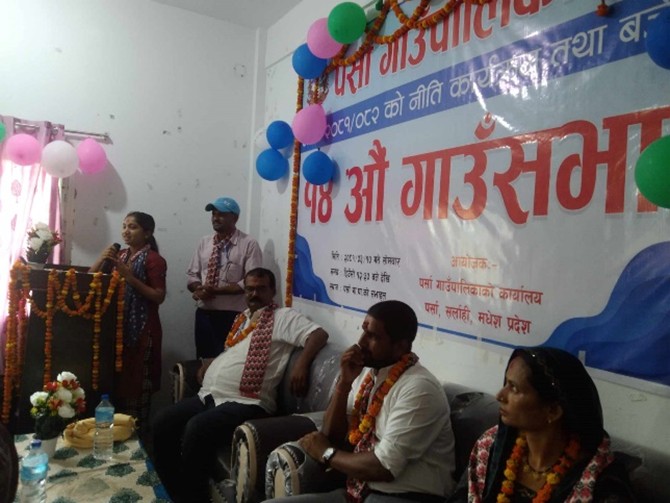
16-year-old Ganita Kumari, Chair of the Municipal Child Club network of Haripurwa Municipality, in her speech during the budget announcement programme informed, “Childhood is a very prime and sensitive stage. Governments and parents should invest in education, sports, entertainment, and child-friendly infrastructure and act against child labour, child marriage, and violence. The government should ensure basic rights of children for our well-being. I am glad to have the platform to speak on behalf of the children and acknowledge meaningful participation in this budget speech program.”
Shifting Mindsets and Values
Parwati Sunuwar, the Chairperson of Phikkal Rural Municipality, is committed to allocating a budget for children as per their demands and entrusting them to make the rural municipality child-friendly, ensuring child protection mechanisms and other minimum indicators are in place as set by the Government of Nepal. While ward five of Phikkal Rural Municipality has been declared as Child Friendly Local Governance [CFLG], ward three is in the process of declaration. Simultaneously, the whole local government will be in the process of CFLG declaration. She allocated an USD 11,500 budget for children in accordance with their demands in FY24. Last year, the budget allocated to children was meager, with only USD 110 for investing in children’s sectors. Unlike in the past, most of the local governments have significantly increased their budgets on children's protection.
There were 15 policies relating to child protection developed for effective implementation programming and to strengthen the child protection system. After the inputs in policies, five local governments established child funds for emergency support to children, and child welfare officers were assigned to regulate child protection policies. Furthermore, a case management system has also been established, and most importantly, the government stakeholders are able to ascertain that children are the important stakeholders and that the government should be accountable to respond and safeguard child rights.
Child-led budget advocacy in local governments is crucial for ensuring that the voices and needs of children are heard and addressed. By actively involving children in the budget formulation process, local governments can create more inclusive and effective policies that directly impact the well-being and development of young citizens. This approach not only empowers children but also fosters a sense of responsibility and civic engagement from a young age. Ultimately, child-led budget advocacy helps build a more equitable and responsive governance system that prioritizes the rights and protection of children, paving the way for a brighter future for all.
Authored by: Pramil Adhikari (Field Policy & Communications Lead-EFO)